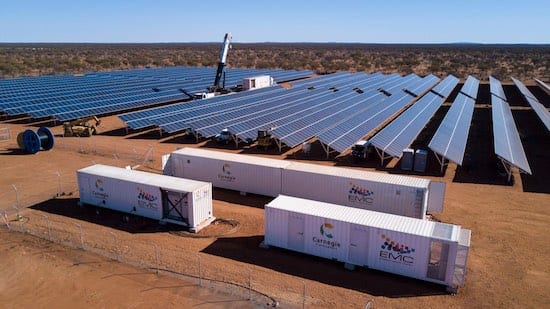The NSW Independent Pricing and Regulatory Tribunal has recommended new standards that would encourage the use of microgrids to supply power to households in remote and fringe-of-grid areas, issuing a draft set of reforms that recognise the benefits of solar and storage in providing low cost, reliable power.
In a draft report of its review of electricity distribution reliability standards, IPART has recommended that electricity reliability standards be reformed to recognise the benefits that can be provided by microgrid and standalone power systems that are operated by distribution network companies.
IPART said the current strict reliability standards had contributed to the increasing costs of electricity, as network operators were compelled to invest in new network infrastructure even when it delivered little value to customers and often prevented the deployment of new, lower cost, technologies.
The reforms would work to protect consumers when barriers to the use of microgrids by distribution networks are lifted, ensuring they receive the same level of service provided by a maintaining a connection to the main grid.
Existing legislative barriers have effectively made it impossible for distribution network companies to serve customers through a microgrid, forcing them to maintain connections to the main grid even though it was a more expensive and less reliable option.
In most jurisdictions, the cost of serving fringe-of-grid customers is shared across all energy users, leading to unnecessarily higher electricity prices for all energy users.
In some parts of the grid, particularly in fringe-of-grid areas, maintaining a connection to the main grid can be costly and unreliable, as supply can often be dependent on a single, vulnerable, network link stretching out over hundreds of kilometres.
In some cases, a more effective way to supply power remote households is through the installation of a standalone power system, supplying solar and battery storage directly to a premise, but regulations can force network companies to keep the home connected to the grid.
The falling cost of distributed energy systems, particularly solar and battery storage, mean it is now cost effective to serve more remote households through a microgrid or standalone power system, that can actually improve reliability, but regulations have generally prevented it, including ring-fencing requirements that prevent network companies being involved in the sale of electricity to customers.
The national rule-maker, the Australian Energy Market Commission (AEMC), has already recommended changes to national energy rules to remove barriers in national regulations.
Its review of the potential for remote power systems found that there are thousands of candidate sites where taking customers off the main grid, and serving them with microgrids or the installation of solar and storage, could reduce costs and improve reliability.
The NSW IPART recommended reforms would see guaranteed service levels secured for electricity customers transitioned to a distribution company provided microgrid or standalone power system, ensuring their level of service is no worse than that achieved by remaining connected to the main grid.
The recommendations are part of a wider package of proposed reforms being considered by the NSW IPART, which are designed to reduce the cost of serving electricity customers by better reflecting the value electricity users place in reliability.
“Setting the right standard is about striking a balance between the costs that the businesses incur in providing more resilient, reliable networks and the value that customers place on a reliable, continuous supply of electricity,” Tribunal member Sandra Gamble said.
“Historically most customers receive a very reliable supply, but providing this has driven increased network costs.”
“Our draft recommendations require networks to ensure that investments in reliability reflect customers’ willingness to pay and are delivered at least cost. Innovative solutions to reliability such as microgrids and standalone power systems can deliver a reliable network at lower cost”, Gamble added.
IPART had recommended that distribution network companies begin to publish data on the quality of service delivered to households with rooftop solar, including their ability to export their extra electricity back into the grid.
“The networks were originally designed for electricity to flow in one direction,” Gamble said. “A number of bodies are working on solutions to this problem. Under the draft recommendations, the providers would begin publishing data on the quality of service to customers with these technologies, with a view to informing any future regulatory changes.”
IPART will conduct a public hearing to receive feedback on the proposed reforms in early November and will aim to deliver its final recommends before the end of the year.








